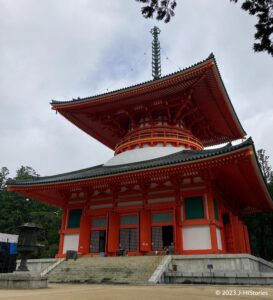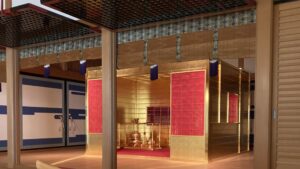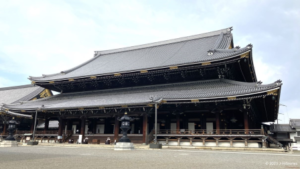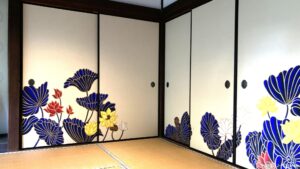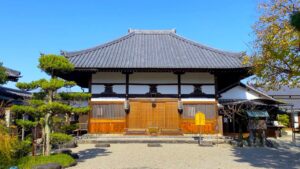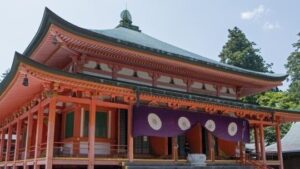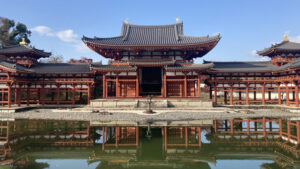Kenninji Temple, the oldest Zen Temple and beautiful Zen Garden in Kyoto
The hustle-bustle of Hanamikoji Street in the center of Kyoto is belied by the tranquility of Kenninji as the head temple of the Kenninji school of the Rinzai sect of Zen Buddhism. The Imperial Gate in front, Sanmon Gate, Dharma Hall, and Hojo Hall stand in the Zen-style straight line. After studying Zen Buddhism in […]
Koyasan Okunoin, Why are there so many gravestones?
One of the two most sacred sanctuaries at Koyasan is Okunoin. The Okunoin is believed the sanctuary where Maitreya Bodhisattva descends. The mausoleum where Kukai rests is located at the innermost part of the sanctuary. The 2-km approach from the Ichi-no-hashi bridge to Okunoin is lined with large cedar trees that are said to be […]
Koyasan, a mountain-top religious city of the Shingon Esoteric Buddhism
The Candle Festival is held on August 13th to pray for the spirits of all deceased at Koyasan - a World Heritage Site - located about 850 meters above sea level. Approximately one hundred thousand votive candles line the 2 km approach to Okunoin, surrounded by Japanese cedar trees, creating a solemn atmosphere in the […]
The Golden Tea Room & Taian Tea Room
The walls, pillars, ceiling, and tea utensils covered in gold leaf reflect a solemn scarlet color in the Golden Tea Room through the scarlet woolen cloth on the Shoji screen. In contrast, Taian in Myokian Temple, a National Treasure, is the oldest existing tea room and one of three tea rooms of national treasures (Taian, […]
Osaka Honganji Temple: The Jodo Shinshu sect of Buddhism was divided into East and West
The Higashi (East) and Nishi (Eest) Honqanji Temples stand along Shichijo Street in Kyoto, less than 500 meters away. The Goei-do of the Higashi Honganji is the largest wooden founder hall in the world and enshrines the wooden statue of the founder, Shinran. The Nishi Honganji, a World Heritage Site, has remained intact to this […]
Yoshizaki Temple, the base of evangelist Rennyo of Jodo Shinshu Buddhism
The largest religious Honganji Sect of Jodo Shinshu in Japan was miraculously re-established starting at the Yoshizaki Temple by Rennyo in 15C after its prolonged stagnation. Why was Rennyo able to spread his followers? What teaching did people believe? The answer lies in the presence of people who found the joy of life in Rennyo’s […]
Shorenin Temple, Birth of Buddhism to Save the People
Shorenin Temple Kyoto sheltered and protected two persecuted Buddhists, Honen (1133-1212, 法然)and Shinran (1173-1263, 親鸞), from the Enryakuji Temple of the Tendai sect of Buddhism. Honen and Shinran were revolutionary figures in the Buddhist world whose teaching, later Japanese Pure Land Buddhism, was the chanting of the name of Amitabha Buddha single-mindedly towards enlightenment, trusting […]
Asukadera, the First Full-scale Buddhist Temple in Japan
Asukadera Temple was the first full-scale Buddhist temple in Japan, spending approximately 200m from east to west and 300m from north to south. It was built in the capital province of Asuka in 596, using various advanced technologies in architecture, geology, and painting. In the face of the threat of falling into the tributary nation […]
Enryakuji Temple Enlightens the World for over 1200 years
Enryakuji on Mt. Hiei was founded by Saicho. Producing founders of several sects, it's called the "Mother of Japanese Buddhism." Enryakuji fought against three warlords: Oda Nobnaga, Shogun, and its retainer.
Byodoin Temple, Fujiwara Yorimichi's Aspiration for a Peaceful Death in the Pure Land of Buddhism
Byodoin Temple in Kyoto, the vermilion hue of the Phoenix Hall, golden-seated Amitabha Tathagata, many attractions. Fujiwara Yorimichi, the grand minister, built Byodoin Temple in 11C to wish the peacefule death in the pure land.



